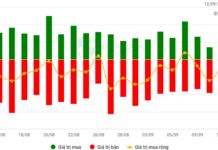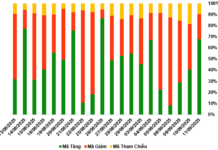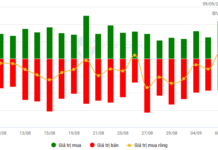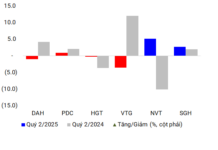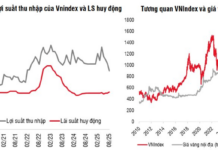## Giant Squash, One Fruit Feeds the Entire Neighborhood
The people of Chan Trach Village (My Tho Commune, Phu My District, Binh Dinh Province) take great pride in their giant squash variety, which they believe is unrivaled throughout Vietnam. This unusual squash produces fruits weighing between 40 and 60 kilograms, with some “mutant” fruits weighing over 70 kilograms.
Uncle Ba Bien (67 years old), one of the 30 households still cultivating the giant squash in Chan Trach, shared: “My father is 92 years old this year and he still recalls that squash was grown in our family even when he was a child. Before that, his great-grandfather and great-great-grandfather also grew squash of this size. And so it has continued with his descendants, with even the smallest fruit weighing around 40 kilograms.”
“The strange thing is, the squash grown only in this village can reach such weight. I’ve given the seeds to relatives in Saigon and the north to plant, but they say that despite careful cultivation, their largest fruits only weigh 15-20 kilograms, and they can’t get any bigger. Even in the same commune, squash grown in other villages are much smaller. It’s a strange phenomenon.”
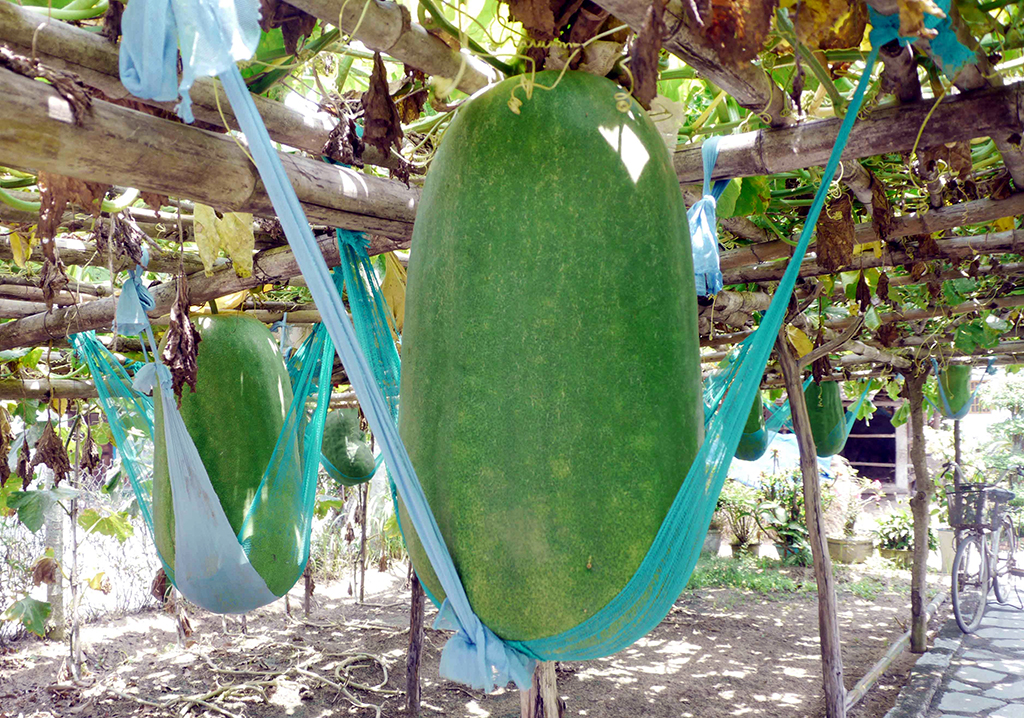
Giant squash suspended in hammocks to reduce strain on the vines
Typically, in early November (lunar calendar), villagers prepare the soil, sow the seeds, and set up trellises for the squash vines to climb. In the past, the trellises were made of bamboo, and had to be replaced every few years to ensure they were strong enough to support the giant fruits.
After several instances of trellises collapsing mid-season, Uncle Ba Bien invested in concrete pillars to support his squash plants. Each trellis, including the fruits and vines, can withstand a weight of approximately 5 tons. “Building a squash trellis is like building a house,” he joked.
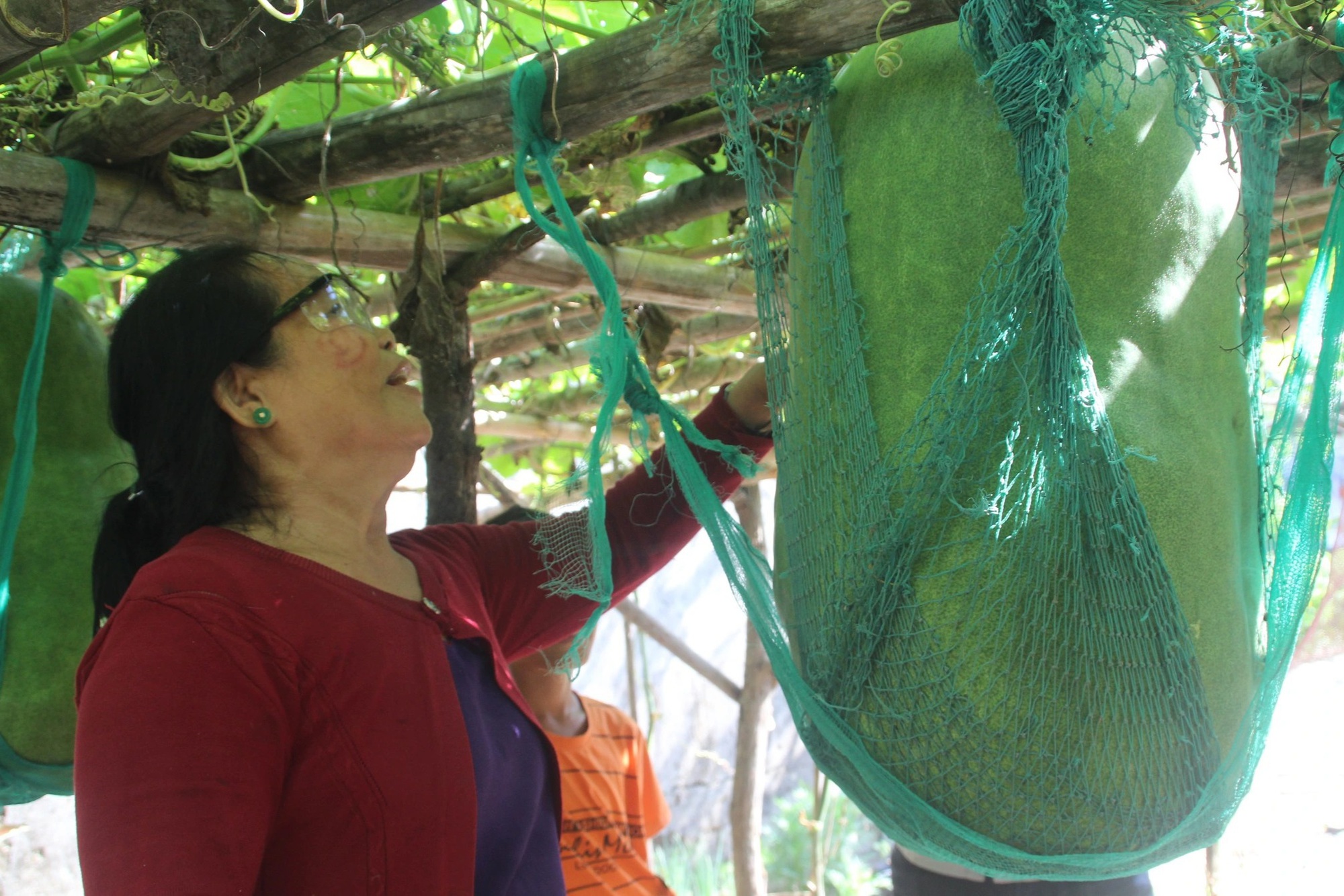
The squash in this village weigh no less than 40 kilograms per fruit
After the Lunar New Year, when the squash begin to bear fruit, the villagers have to stay up at night to watch over them. When they see a fruit forming, they must pull it down through the leaves and secure it to the trellis, or it will not grow properly.
Uncle Ba Bien’s wife revealed that each year they grow around 100-150 squash plants, but they will prune them during the early stages, leaving only one good fruit on each vine, allowing the plant to focus its energy on that fruit.
When the fruit becomes heavy, they create hammocks to support it under the trellis, preventing the stem from breaking and ensuring the fruit does not fall or break in the middle of its growth.
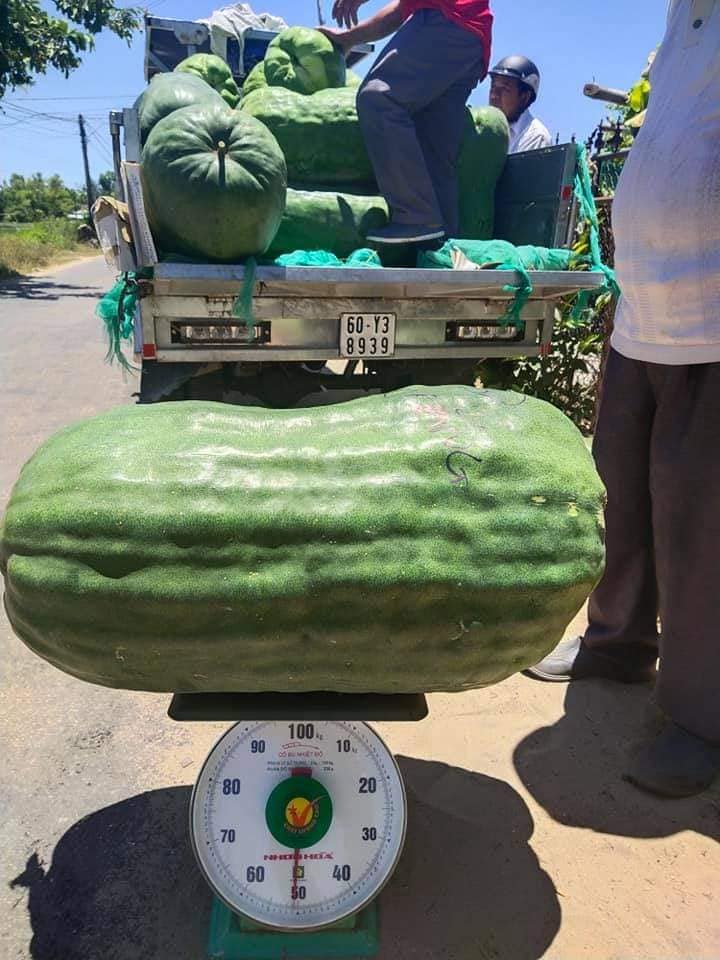
A green squash as heavy as a piglet
## Mystery of the Groundwater Flowing Only Around the Village, Nourishing Giant Squash for Centuries
According to the villagers, the giant squash grown here are firm, have thick flesh, and have a sweet, aromatic flavor, far superior to ordinary squash. They are used to make soup, jam, and tea. The squash shoots and leaves are also larger than those of regular squash, and the villagers consume them as a daily vegetable.
In addition to harvesting the fruits and leaves, when the vines are cut, the villagers collect the liquid that flows out and use it as a traditional remedy to reduce fever in children and improve the skin of women.
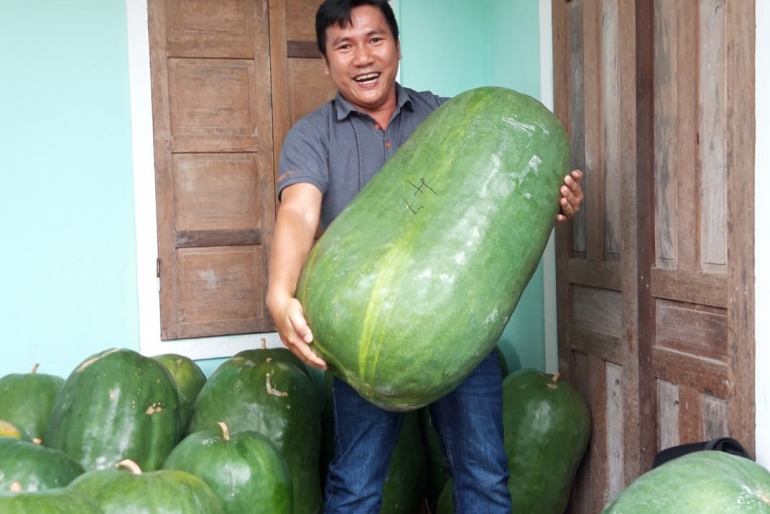
Chan My squash resemble papayas in appearance
Uncle Ba Bien shared that the villagers have been growing squash of this size since ancient times. It is a pure, local variety, and the seeds are saved from season to season to plant the next crop.
Apart from cultivation techniques and fertilizing with manure and peanut oilcakes (the residue left after extracting oil from peanuts) to produce dense, colorful, and flavorful squash, the villagers also use only clean water from the underground aquifers for irrigation.
When asked why only this small village can grow giant squash, Uncle Ba Bien believes it is largely due to the soil and topography. Chan My Village is near the sea and has sandy loam soil, which is ideal for squash.
Additionally, “the village has a natural underground aquifer with cool, sweet water. The villagers only need to dig about 1 meter deep to reach it. It is possible that using this water for irrigation, combined with the good variety and proper care, has produced these results. Just a short distance away, the underground aquifer disappears, and even if squash are grown there, they will not reach the same weight as here.”
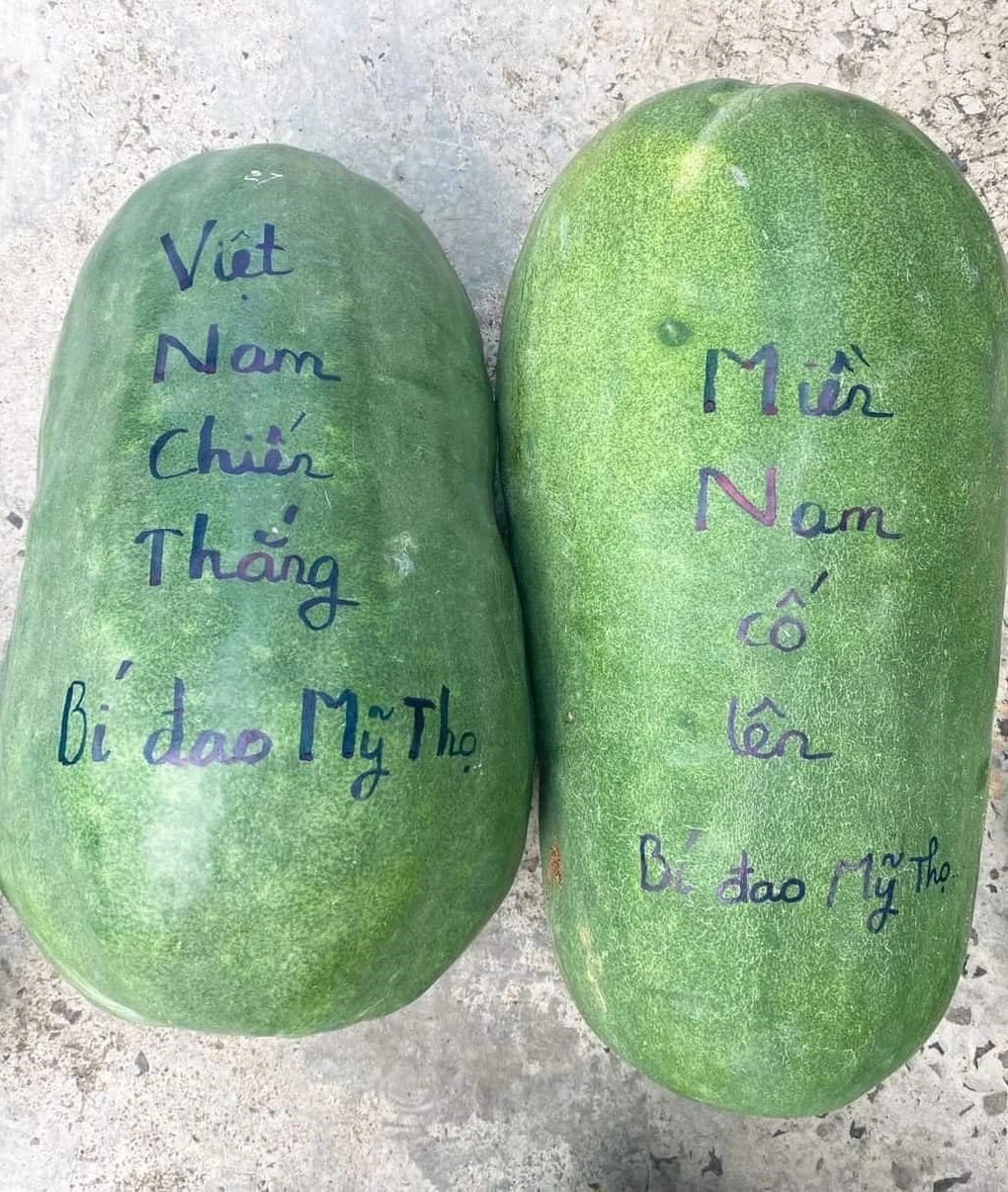
Squash sent by the villagers to Ho Chi Minh City for charity during the COVID-19 pandemic
From a feng shui perspective, the village elders say that the Chan Trach Pond is nestled in the middle of a swamp, with mountains on three sides and facing the sea. Legend has it that in ancient times, a giant carried two mountains to block the path of a monster, and when he reached this place, his carrying pole broke, and the mountains fell, creating a natural barrier against silt, making the land fertile for growing all kinds of plants.
Despite its unique features, squash farming in Chan Trach is gradually declining due to difficulties in finding buyers and the low income it generates. The villagers can only grow one crop per year. Even though they harvest around 4-5 tons of squash, the low price makes it hardly profitable. Now, only 30 households in the entire village continue to preserve the giant squash variety and cultivate it.
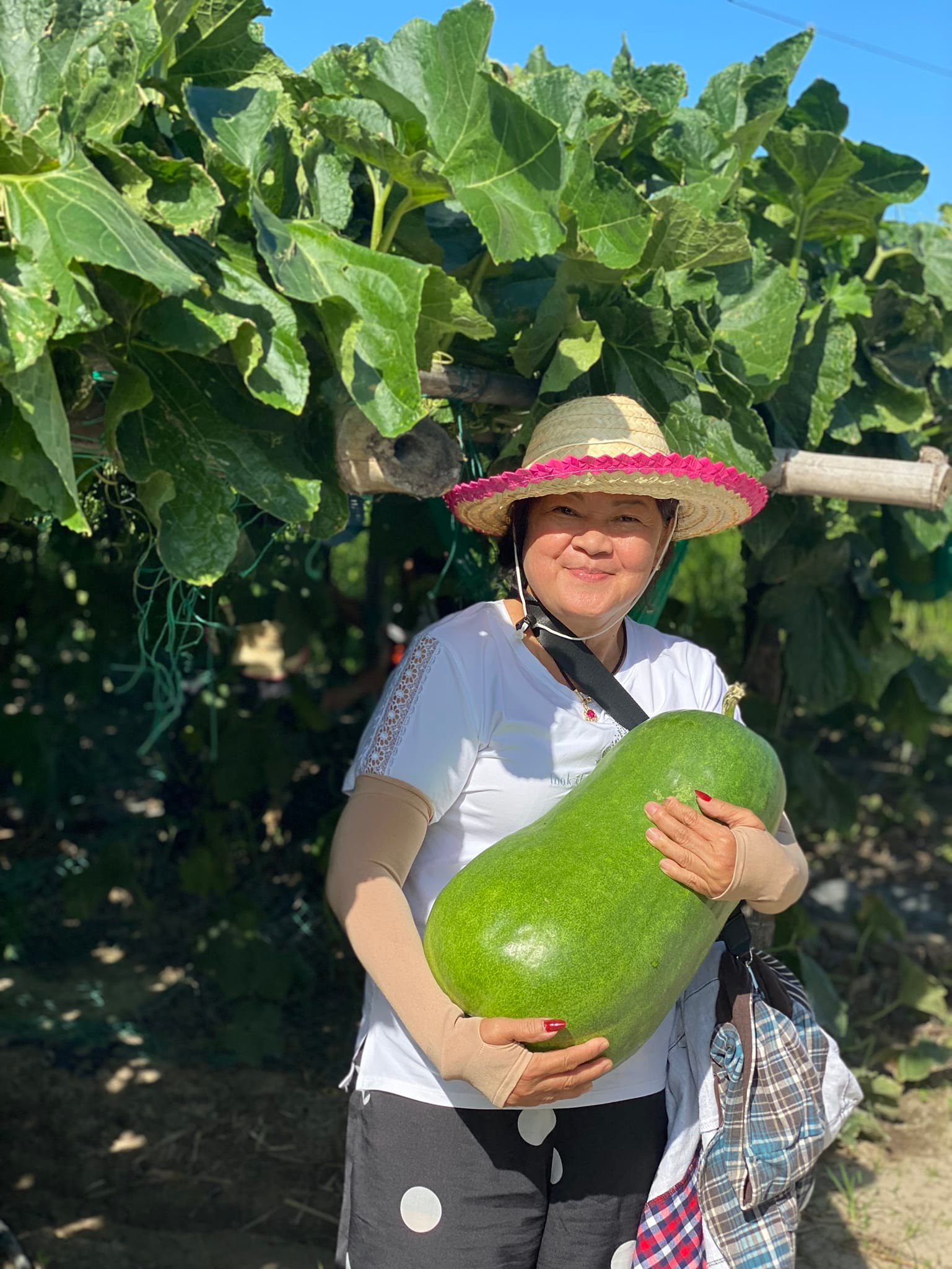
Tourists posing for photos with the giant squash

